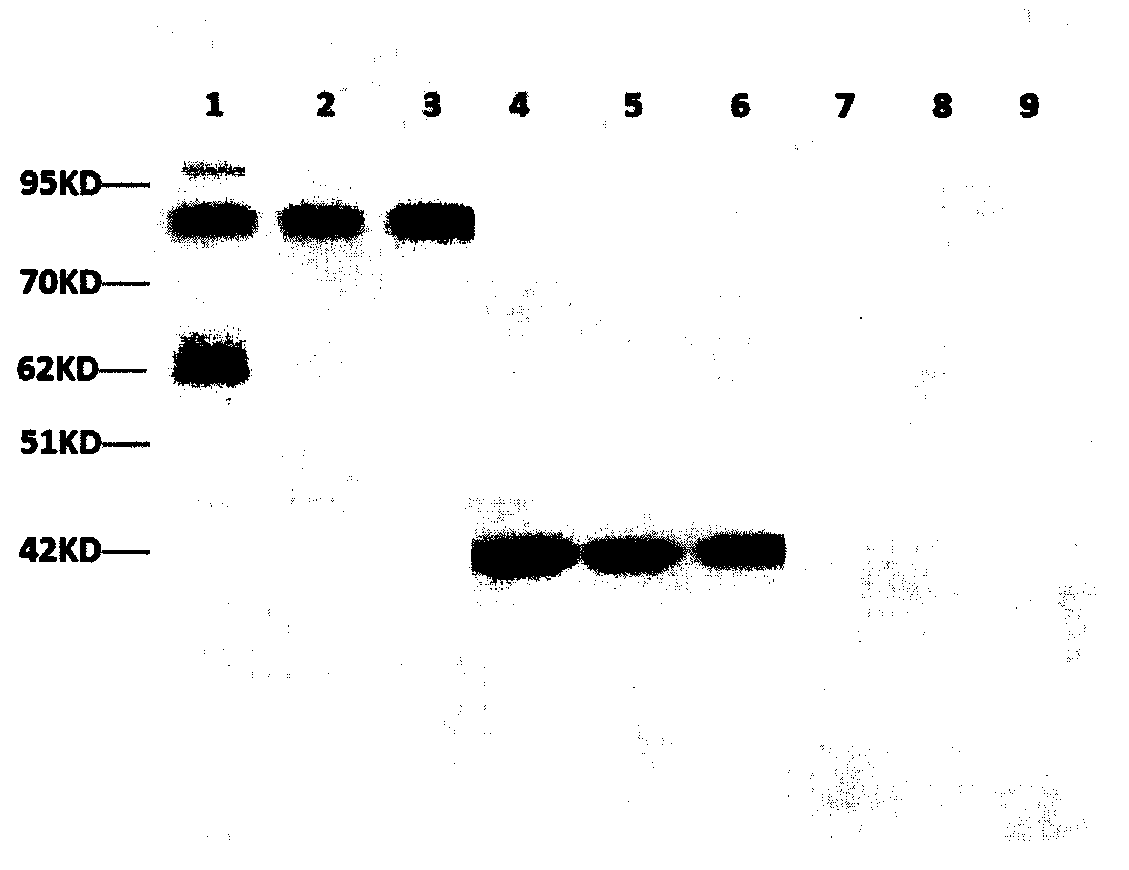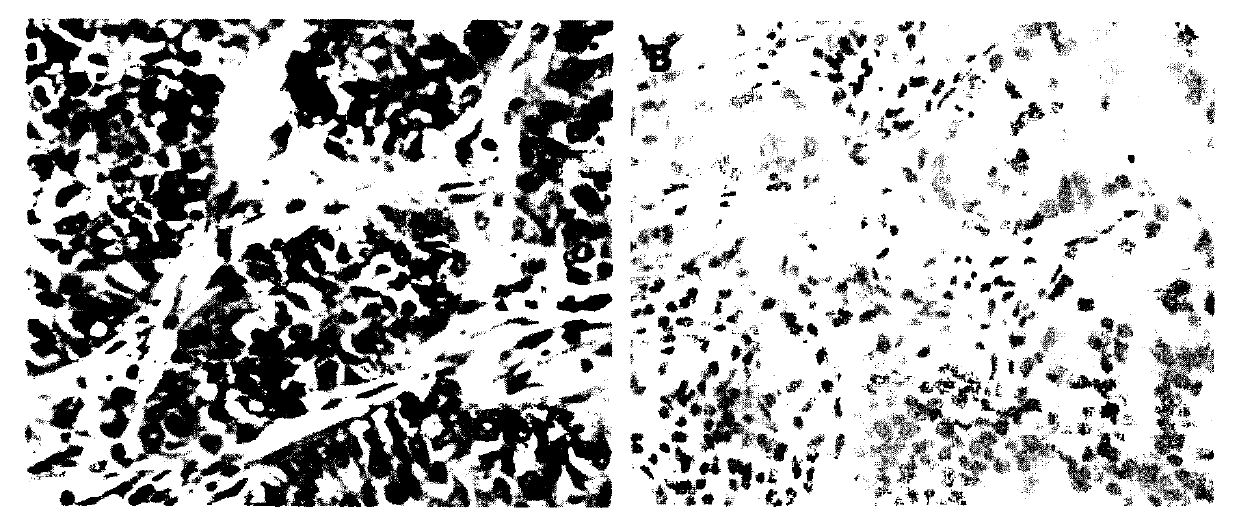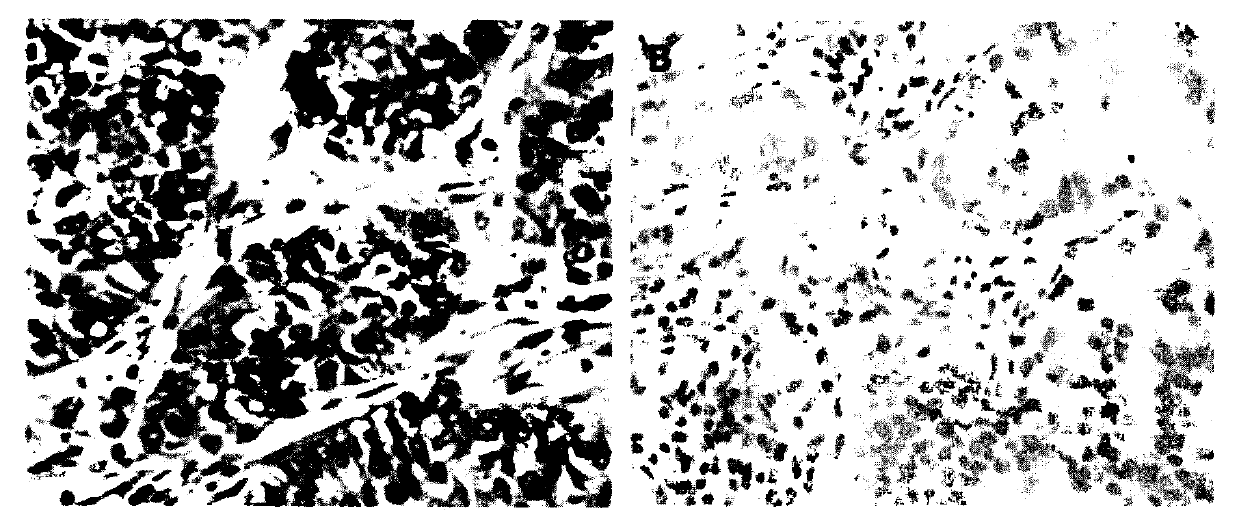Preparation of rabbit anti-human TRK protein monoclonal antibody and immunohistochemical application thereof
A technology of monoclonal antibody and immunohistochemistry, which is applied in the field of immunohistochemistry, rabbit monoclonal antibody against human TRK protein, can solve the problem of rare TRK antibody, and achieve the effect of improving specificity and reliability
- Summary
- Abstract
- Description
- Claims
- Application Information
AI Technical Summary
Problems solved by technology
Method used
Image
Examples
Embodiment 1
[0023] Embodiment 1 Preparation of anti-TRK monoclonal antibody
[0024] 1. Preparation of immune source: According to the sequence information of the three subtypes of NTRK gene NTRK1 (NM_002529.3), NTRK2 (NM_001018064.2) and NTRK3 (NM_001012338.2), order and synthesize human TRK universal polypeptide with BSA sequence at the N-terminal , for immunization of experimental animals and ELISA screening of positive clones.
[0025] 2. Blood collection before immunization: select purebred New Zealand white rabbits, and take blood from ear veins as pre-immunization blood samples.
[0026] 3. Screening and preparation of monoclonal antibodies
[0027] 1. Animal immunization: The above synthetic human TRK universal polypeptide with BSA sequence at the N-terminal was fully mixed with an equal volume of Freund's complete adjuvant to prepare a fully emulsified immune source, and the purebred New Zealand white rabbit was first immunized by subcutaneous injection. The immunization dose i...
Embodiment 2
[0030] Example 2 Immunohistochemical experiments using the monoclonal antibody of the present invention as the primary antibody
[0031] 1. Sampling 24 different types of cancer tissues to make tissue microarrays, and slice them with a Leica RM2235 tissue slicer with a thickness of 4 μm;
[0032] 2. Use the Leica BondMax immunohistochemical automatic staining machine to carry out immunohistochemical staining test on the antibody of the present invention, using the dewaxing and hydration conditions that come with the machine. The specific steps are: incubate at 60°C for 30min, and wash with dewaxing solution (Leica). 3 times. For antigen retrieval, antigen retrieval solution 2 (ER2, Leica) was used and incubated at 100°C for 30 min. The antibody of the present invention was used as the primary antibody, diluted with antibody diluent (Leica) to a final concentration of 1.0 μg / ml, 150 μl. The antibody was incubated at room temperature for 30 min. Use 150 μl of matching seconda...
Embodiment 3
[0035] Embodiment 3 Specific detection of monoclonal antibody of the present invention
[0036] No positive band can be seen in the detection of untransfected 293T cells by using the antibody of the present invention.
[0037] The antibody of the present invention was used to detect the 96-well plate (Her-2) pre-coated with irrelevant antigens by ELISA, and the result was negative.
PUM
| Property | Measurement | Unit |
|---|---|---|
| Thickness | aaaaa | aaaaa |
Abstract
Description
Claims
Application Information
 Login to View More
Login to View More - R&D
- Intellectual Property
- Life Sciences
- Materials
- Tech Scout
- Unparalleled Data Quality
- Higher Quality Content
- 60% Fewer Hallucinations
Browse by: Latest US Patents, China's latest patents, Technical Efficacy Thesaurus, Application Domain, Technology Topic, Popular Technical Reports.
© 2025 PatSnap. All rights reserved.Legal|Privacy policy|Modern Slavery Act Transparency Statement|Sitemap|About US| Contact US: help@patsnap.com



